| Stadium Name: | Etihad Stadium |
| Constructed: | 2002 |
| Location: | Etihad Stadium, Etihad Campus, Manchester M11 3FF, United Kingdom |
| Capacity: | 60,000 |
| Home Team: | Manchester City |
| Owner: | Manchester City Council |
| Record Attendance: | 54,693 |
History
Etihad Stadium, located in Manchester, is one of the most iconic venues in modern football. Originally built for the 2002 Commonwealth Games, the stadium became a centerpiece of Manchester’s efforts to promote itself as a global sporting hub. Initially named the City of Manchester Stadium, it played host to track and field events during the games. However, even during its early stages, the stadium was designed with future football usage in mind.
In 2003, Manchester City Football Club moved into the stadium. Vacating their long-time home at Maine Road. The club signed a 250-year lease with the city council, marking the start of a new era for both the club and the stadium. In 2011, a landmark sponsorship deal with Etihad Airways led to the renaming of the venue as Etihad Stadium.
Over the years, the stadium has undergone several transformations and expansions. Evolving into a premier destination for both sports and entertainment. Its role has expanded far beyond being just a football ground, cementing its place as a key element of Manchester’s cultural and economic landscape.
Architecture
The architecture of the Etihad Stadium is a blend of functionality and modern aesthetics. Designed by Arup Sport, the stadium features a striking circular bowl design. It ensures excellent sightlines for spectators from all seating angles. One of the stadium’s most distinctive features is its roof, which is supported by a unique cable-tension system anchored by masts. This not only provides structural support but also adds to the visual appeal of the stadium’s exterior.
The roof itself is made of translucent materials, allowing natural light to flood the pitch while keeping fans protected from the elements. The design prioritizes spectator comfort, with unobstructed views, ample legroom, and modern facilities throughout the venue. The bowl-like structure helps amplify crowd noise, creating a vibrant atmosphere on matchdays.
In addition to its main structure, Etihad Stadium is surrounded by landscaped areas, contributing to its status as a landmark in the city of Manchester. The design effectively integrates the stadium into the broader Etihad Campus, ensuring it serves not only as a sports venue but also as a community hub.
Etihad Campus
Adjacent to the stadium is the Etihad Campus, a world-class sporting complex that is home to Manchester City’s state-of-the-art training facilities. The development of the campus began in earnest after Manchester City’s acquisition by the Abu Dhabi United Group in 2008. The aim was to turn the surrounding area into a center for excellence, both in terms of football and community development.
The campus stretches across 80 acres and is home to over 16 pitches, including the Academy Stadium, which serves as the home ground for Manchester City’s women’s team and their youth teams. The integration of training, development, and competitive match venues within one area has transformed the Etihad Campus into a model for football infrastructure globally.
Future Plans
Manchester City has already announced plans to expand the stadium further, increasing its capacity to over 60,000 seats. This expansion will likely include more premium seating options, as well as improvements to the fan experience. In addition to increasing capacity, Manchester City aims to make the Etihad Stadium one of the most environmentally friendly venues in the world. The club plans to invest in sustainable design practices, including renewable energy sources and water conservation measures.
One of the most memorable matches occurred on May 13, 2012, when Manchester City faced Queens Park Rangers on the final day of the Premier League season. In a dramatic 3-2 victory, Sergio Agüero scored in the dying moments to win City their first Premier League title in 44 years. That moment, often referred to as the “Agüeroooo” moment, is forever etched in the history of the club and the stadium.
Etihad Stadium is more than just a football ground. It’s a modern-day coliseum that has played a pivotal role in the resurgence of Manchester City as one of the dominant forces in English and European football. As it prepares for future expansions and continues to host iconic matches and events, Etihad Stadium solidifies its status as one of the premier stadiums in the world. Its combination of sport, entertainment, and community engagement ensures that it will remain a central part of Manchester’s cultural and sporting identity for years to come.
 Sweaty Goal Everything about Football
Sweaty Goal Everything about Football
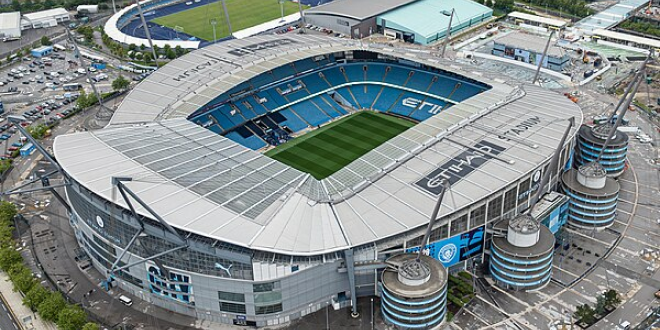
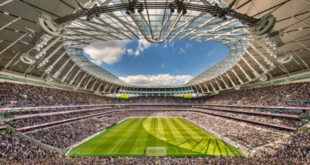
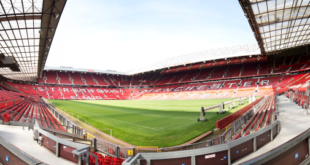
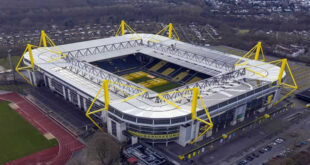
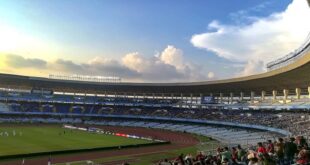
One comment
Pingback: Jack Grealish: English Professional Footballer - Sweaty Goal